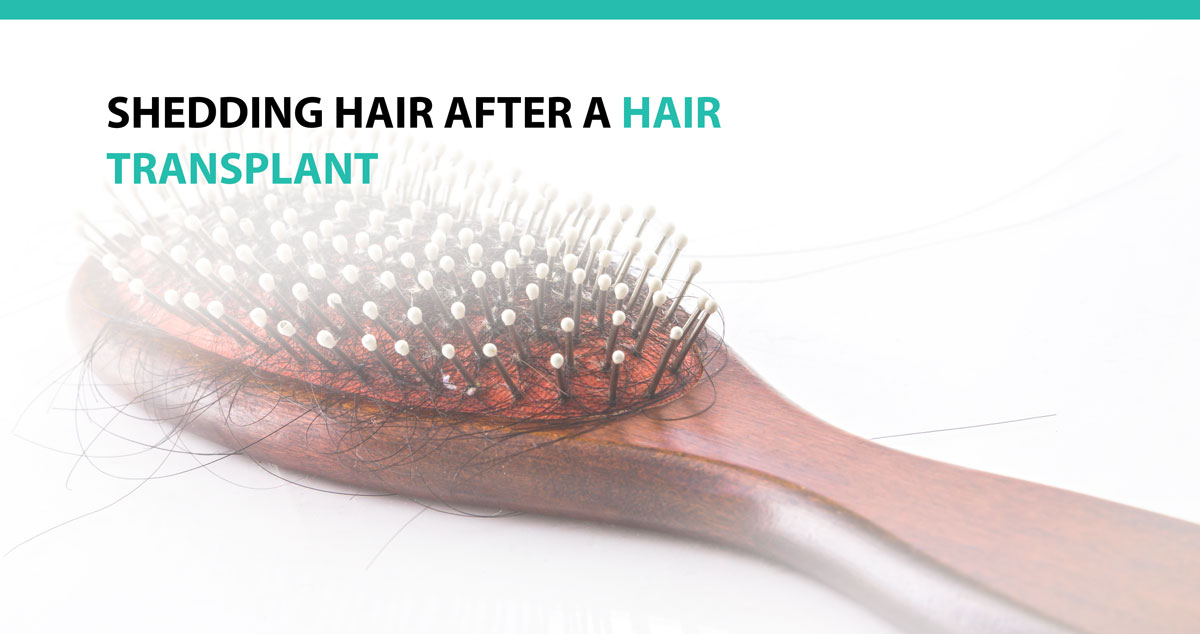
While hair shedding is normal as we tend to shed between 50-100 strands of hair daily, shedding after a hair transplant can confuse most patients. If you are contemplating a hair transplant or worried that your surgery failed because you are losing hair, this article is for you. In this post, you’ll learn more about hair shedding after a hair transplant and what you can do about it.
Why Does Hair Shed After Surgery?
Post-operative hair shedding is an expected occurrence for individuals who undergo a hair transplant. The most common shedding after a hair transplant is losing the transplanted hair, also known as shock loss or effluvium. Two weeks after the surgery, your hair grafts start falling off and may continue for up to 6 weeks.
Shock loss mainly occurs from the disruption of blood supply to hair during the transplanting process, forcing the hair into a resting phase. You may also shed native hair at the transplant areas after the procedure due to trauma to the scalp. However, it is no cause for alarm and only happens as a response to the surgery. Your hair will grow back normally after the shedding.
Shedding can also occur if you went for the procedure too early into the hair loss. The continued thinning is usually a progression of the existing alopecia. You should, therefore, go for a hair transplant much later in life, preferably after the age of 30.
If you notice that hair loss after a hair loss, it does not mean that the procedure failed or that your scalp is rejecting the grafts. It is a normal process, and your hair should begin growing back naturally after four months.
How to Minimize Hair Shedding After a Hair Transplant
Hair shedding after a transplant is part of the hair restoration process, and there’s not much you can do to prevent it. However, the following options are available to help minimize the amount of hair you lose after the procedure.
- Medication
You can reduce hair shedding with the help of finasteride (Propecia and topical minoxidil – Rogaine). Finasteride can minimize hair shedding by suppressing the DHT hormone. The suppression interrupts the development and progression of miniaturization and male pattern baldness.
Minoxidil, on the other hand, works by darkening hair strands and increasing hair growth. You can start seeing results between 4 and 6 months of using the medication. Minoxidil is suitable for individuals below 30 years.
- Ensure Correct Timing of the Transplant
Most people make the mistake of seeking hair transplant services at the early stages of hair loss. However, doing so does not consider the progression of hair loss, leading to the hair looking thinner even after surgery. It is advisable to let the hair loss run its course as hair transplants do not protect the existing natural hair from shedding in the future.
Waiting until a later date also allows your surgeon to accurately establish the number of grafts you need for the procedure. To prevent shedding after a hair transplant, time the procedure right. Treat alopecia with medication first once you experience symptoms, and only opt for a hair transplant when all other interventions fail.
- Cosmetic Camouflage
If the hair shedding or thinning after a hair transplant bothers you, you should consider cosmetic camouflage to cover up until your hair grows back. Cosmetic alternatives disguise hair loss by adding volume to the base of your hair shafts, integrating hair-building fibers to achieve fuller coverage, and topical shading to conceal bald spots.
Looking for the Best Doctor to Restore Your Hair?
Dr. Williams of Advanced Hair Institute is your best bet if you are looking for hair restoration solutions. Not only does he have the experience and skills in performing successful hair transplants with natural-looking results, but he also uses the latest hair restoration technologies. What’s more, you get access to personalized hair loss treatment plans to suit your unique situation. Get in touch today for reliable hair loss solutions!










